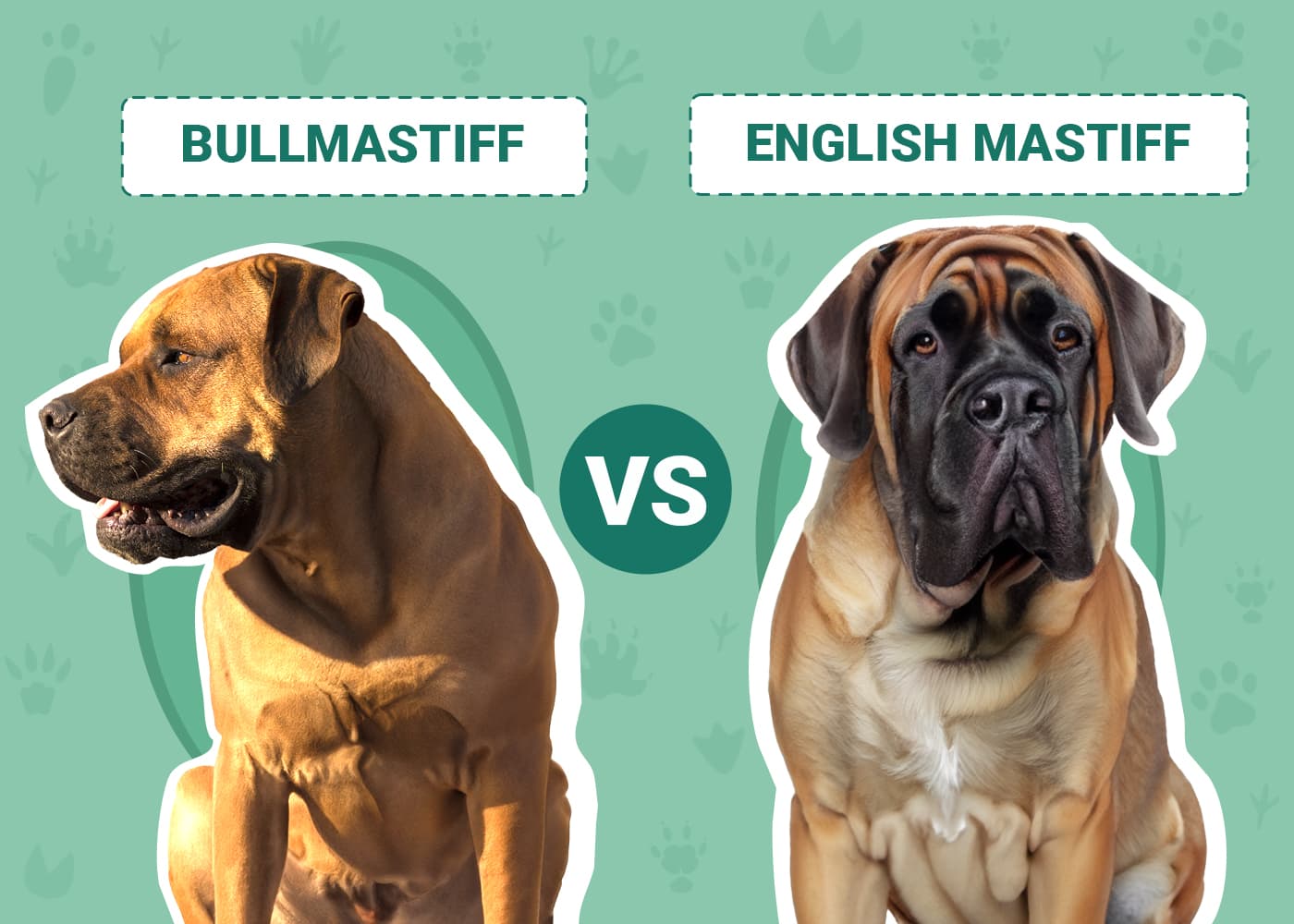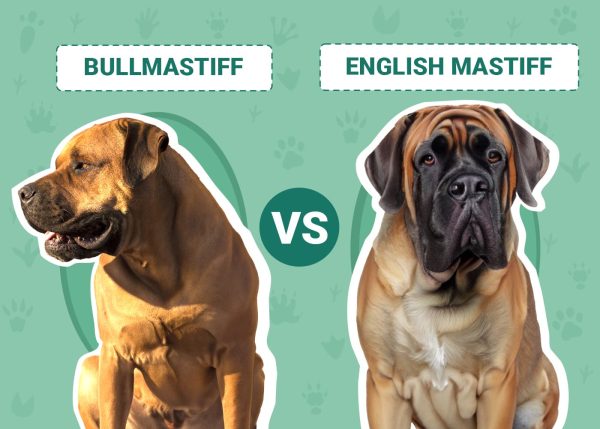Click to Skip Ahead
Many pet owners looking for a Mastiff as a pet wonder what the differences are between the Bullmastiff and the English Mastiff. There are quite a few similarities; they are around the same size and live for around the same amount of time if taken care of.
However, the differences appear when you learn which environments are ideal for the dogs to be raised in. For example, the Bullmastiff does fine with apartment living, while the English Mastiff needs room to run. Both are family-friendly, but the English Mastiff is loyal and stubborn, while the Bullmastiff is loyal and affectionate.
If you’re wondering which breed will be the best choice of pet for you, join us as we explain the differences between these two loyal canines.
Visual Differences
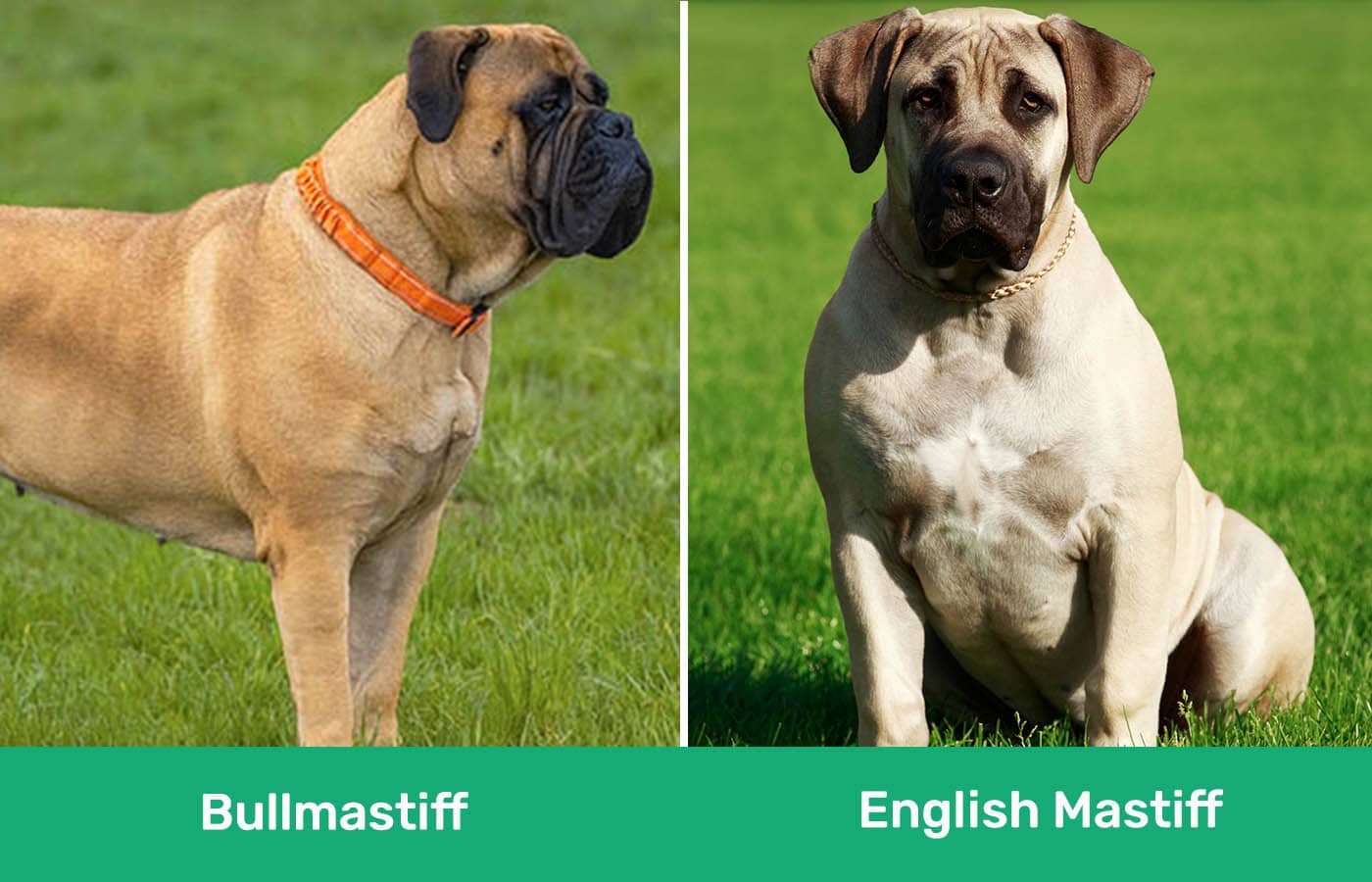
At a Glance
- Average height (adult): 23–27 inches
- Average weight (adult): 100–130 pounds
- Lifespan: 8–10 years
- Exercise: 1+ hours a day
- Grooming needs: Moderate
- Family-friendly: Yes
- Other pet-friendly: Usually not
- Trainability: Loyal, affectionate
- Average height (adult): 27–36 inches
- Average weight (adult): 120–230 pounds
- Lifespan: 6–10 years
- Exercise: 30–40 minutes a day
- Grooming needs: Moderate
- Family-friendly: Yes
- Other pet-friendly: Often
- Trainability: Loyal but stubborn
Bullmastiff Overview
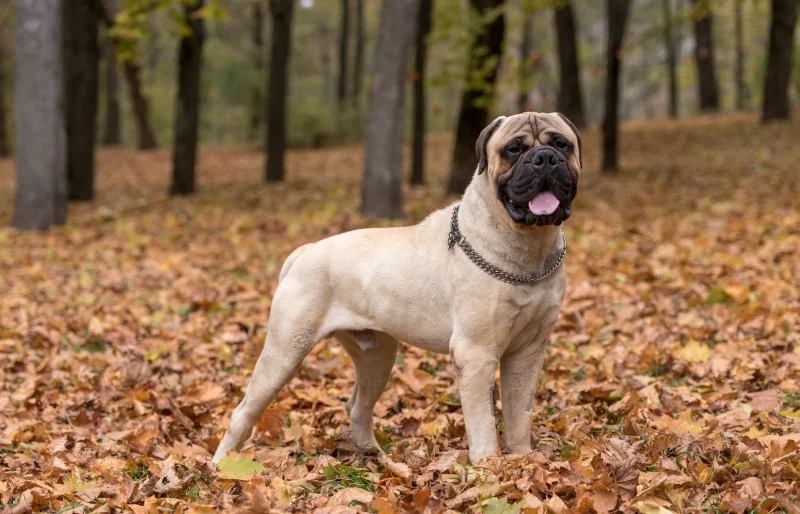
The history of the Bullmastiff begins in 1860 in England. The Bullmastiff is a working dog bred for an interesting purpose; instead of being produced as a hunting dog, it was bred to protect wildlife. Large English estates had a poaching problem, so gamekeepers were hired to protect game from poachers. These gamekeepers needed a large dog that could move fast but stay quiet. The dog also had to be a good tracker and able to catch poachers without mauling them. After a lot of careful breeding, they wound up with the Bullmastiff.
The gamekeepers had tried several breeds, most importantly, the Mastiff and the Bulldog. The Mastiff proved to be too slow, and the Bulldogs of the time were far too ferocious. Gamekeepers began to breed the two dogs together and found a perfect 60% Mastiff and 40% Bulldog mix, which they called the Bullmastiff.
The breed gained the nickname “The Gamekeepers Night Dog” and would continue working with gamekeepers for over half a century. The Bullmastiff was imported into America and became popular fast. The AKC recognized them in 1933, and a pair of full-grown males were imported in 1934 by the Rockefellers to patrol their massive estate.
Personality and Character
The Bullmastiff is known for being intensely loyal and very protective. They are affectionate and gentle towards their family, but that attitude can change when a stranger enters the picture. The Bullmastiff is very standoffish with strangers and can become aggressive if it thinks the stranger is dangerous.
It’s essential to ensure you properly socialize your Bullmastiff when it’s young to avoid aggression toward strangers.
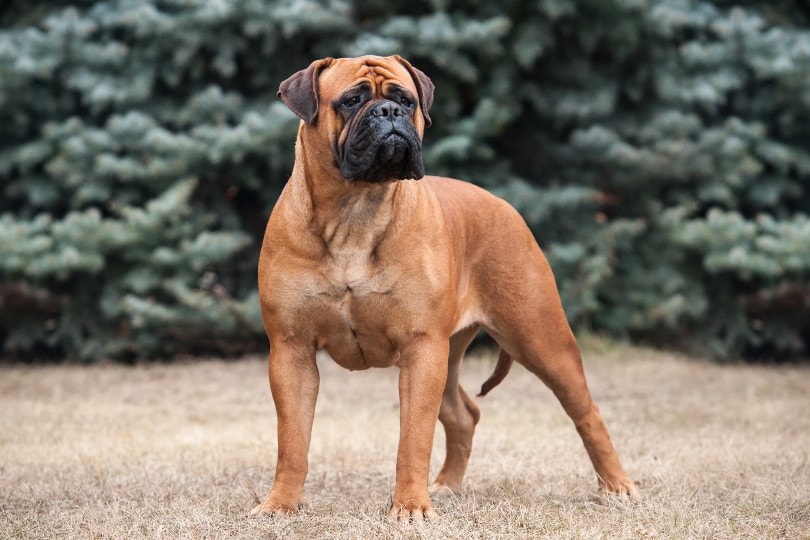
Training
The Bullmastiff is, unfortunately, not an easy dog to train. Despite their intelligence and eagerness to please, their stubbornness makes training them difficult, especially for first-time dog owners. It takes an experienced hand to guide the Bullmastiff, but once trained, it’s a loyal and obedient dog.
Suitable For:
The Bullmastiff is perfect for anyone looking for a guard dog, but that’s not all they’re meant for. Despite their original use, the Bullmastiff makes an excellent companion, even in apartments, despite its larger size. The breed is even fit for families with children; they’re known for treating children with great care.
However, you probably want to pass on the Bullmastiff if you have other pets. They’ve been known to be aggressive with other animals, especially other dogs.
English Mastiff Overview
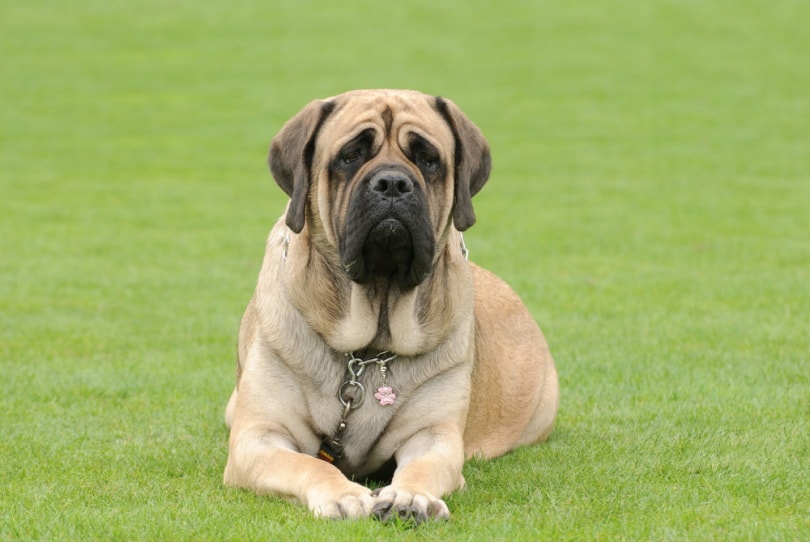
The English Mastiff, officially known as simply the Mastiff, traces its roots back to the Roman Empire. As was typical for them, the Romans were attempting to conquer the island of Britannia or, as we know it, Britain. The Roman legions brought along their dogs that wound up breeding with the native dogs and creating the Mastiff. The Romans were fond of the Mastiff and exported many back homes, where they commonly fought in the Coliseum.
Over the centuries, the British people became enamored with the Mastiff, and many began to bicker over which characteristics defined a dog as a “true Mastiff.” These arguments created the standards we have for the Mastiff. Despite the British owners’ love for the breed, it almost went extinct there due to World War I and II. At a time when many were struggling to feed themselves, they weren’t interested in breeding dogs that would eat just as much as a fully grown man.
Luckily, after the wars, North American breeders were happy to send some Mastiffs back across the pond to their ancestral home.
Personality / Character
The Mastiff is well known for its incredible loyalty and bravery but also for its restraint. Even though the Mastiff could easily hurt or even kill a large number of creatures on earth, it’s been noted that most have great restraint when dealing with smaller creatures and will endure annoyance or attacks from them; this includes other dog breeds and small children.
Despite the laid-back attitude the breed often displays, they are hyper-protective. If a Mastiff feels someone is in trouble, regardless of whether the person is their family, they’ve been known to jump into action.

Training
The Mastiff can be easily taught basic commands and obedience but are stubborn and have short attention spans. They may neglect training because it simply doesn’t interest them and may even walk off while you’re trying to teach them. For the Mastiff, it’s best to keep training short so you keep their attention.
You also must be careful not to upset your Mastiff while training, as they can become even more difficult to train while scared or confused. If you have hurt your Mastiff’s feelings, it may even refuse to engage in the training. It’s important to begin training your Mastiff at an early age, especially regarding socialization. Socializing them early will prevent bad behavior towards strangers and other dogs.
Suitable For:
The Mastiff is an excellent breed for anyone who has room for it. It gets along well with children and other pets and is typically a calm canine. The Mastiff is not the dog for anyone lacking space; a Mastiff without the proper space and exercise can become impatient and destructive. If you don’t have the space or the time to devote to a Mastiff, they are not for you.
Which Breed Is Right for You?
As you can see, the Bullmastiff and the English Mastiff have their similarities, but they also have their differences. The Mastiff is an excellent breed for experienced dog owners with large yards for the dog to run freely.
On the other hand, the Bullmastiff makes an excellent pet for someone looking for a guard dog and living in an apartment or small home, as they don’t need nearly as much space to run as the English Mastiff does. With either of these dogs, you must ensure you have the time and dedication it takes to train and socialize them to be the loyal pets they were meant to be.
See Also:
- Tibetan Mastiff vs English Mastiff: The Key Differences
- Bullmastiff vs French Mastiff: Visual Differences & Overview
Featured Image Credit: (T) DejaVuDesigns, Shutterstock | (B) tamara321, Shutterstock

